Table of Content
- A Sophisticated Comparison Between North and South India
- Best Sunrise Spots to Visit in North and South
- Historical Spots to Visit in North and South
- Adventure Spots to Visit in North and South
- Wildlife in North and South
- Highways and Highlands in North and South
- Conclusion
- FAQ
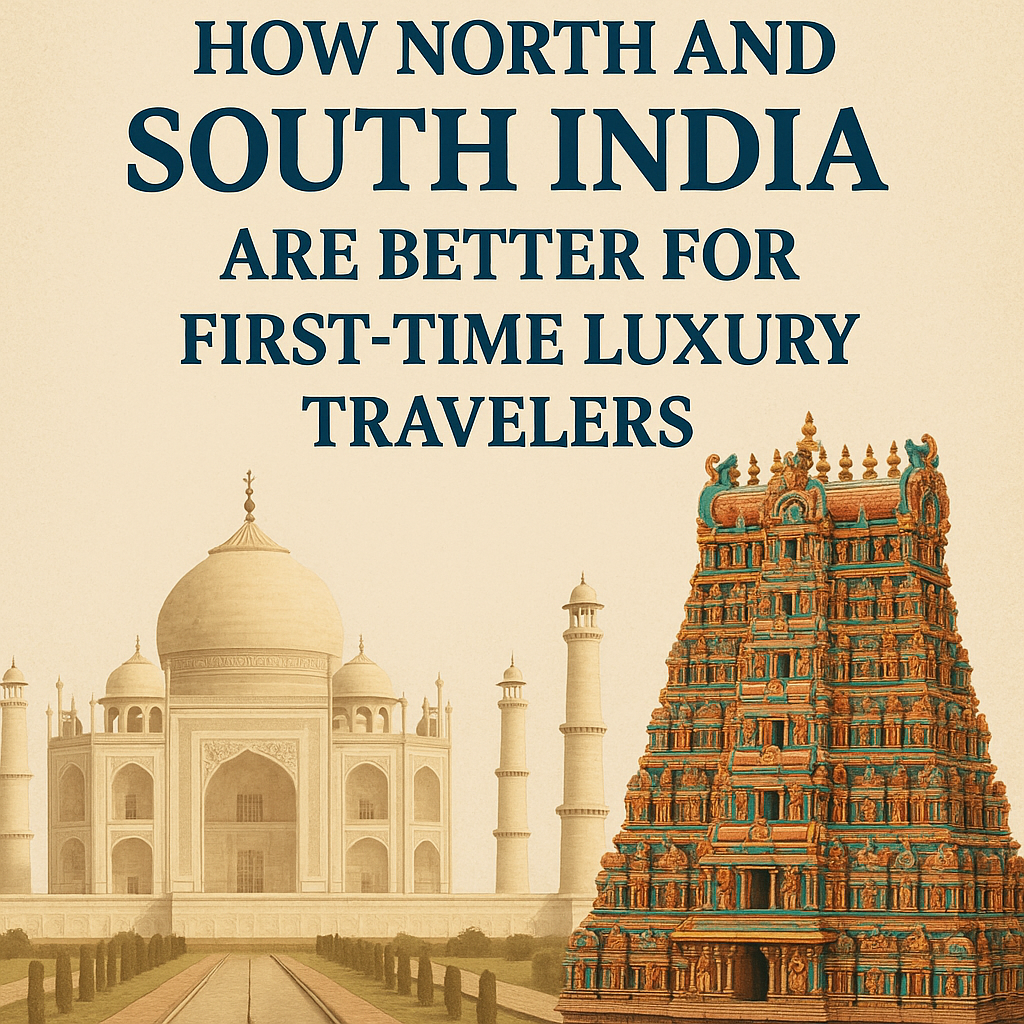
A Sophisticated Comparison Between North and South India
One of the reasons why travelers all over the world find difficulty choosing a North India or South India tour, or which part of India is best for first-time travelers, is this feeling of experiencing everything, from culture to climate, heritage to hill station, natural beauty to traditional marvels, and so on and so forth. But now, as we are on the verge of development, differentiating between how North India and South India is better for first-time travelers is as easy as knowing which direction the sun sets and rises.
We are all aware that every part of India comes with its own culture, music, history, and landscape, which then combine and add value to the whole of India. The northern part of India is known as the home to some of the most iconic landmarks like the Taj Mahal of Agra, Rajasthani forts like Jaipur’s, Jodhpur, and Jaisalmer, and lakes of Udaipur, whereas Varanasi’s ghats of UP represent the wide history of the spiritual realm of Indian culture.
Once you go deep into North India, you experience North India’s historical cities like Delhi and Agra, which were once a main attraction of the Mughal Empire.
Not only that, but you can also experience the glimpse of the Himalayas, which provide stunning sights and opportunities for trekking, especially in places like Himachal Pradesh and Uttarakhand. Generally, North India experiences hot summers and cold winters, and if you want to visit North India, then the best time to visit is from October to March.
Whereas the South is totally different from the North because it is known for its lush greenery, beautiful beaches like those in Goa and Kerala, and hill stations like Ooty and Munnar. South India also has a distinct cultural identity, with classical dance forms, traditional music, and unique architecture like the temples in Tamil Nadu, giving a more spiritual vibe in comparison to North India. The food is delicious yet diverse, featuring rice-based dishes, dosas, and seafood, with a focus on coconut and spices.Because the South shares its coastlines with the Indian Ocean, you will experience more humidity and rain every season.
The best time to go to this region is during the cold weather, meaning November to March. In the end, if you’re more into the historical sites and a mix of both urban and rural, then North is the one to go for. And if you love scenic beauty, tranquility, and a slower pace of nature, then South India might be more appealing.
Best Sunrise Spot in North and South India
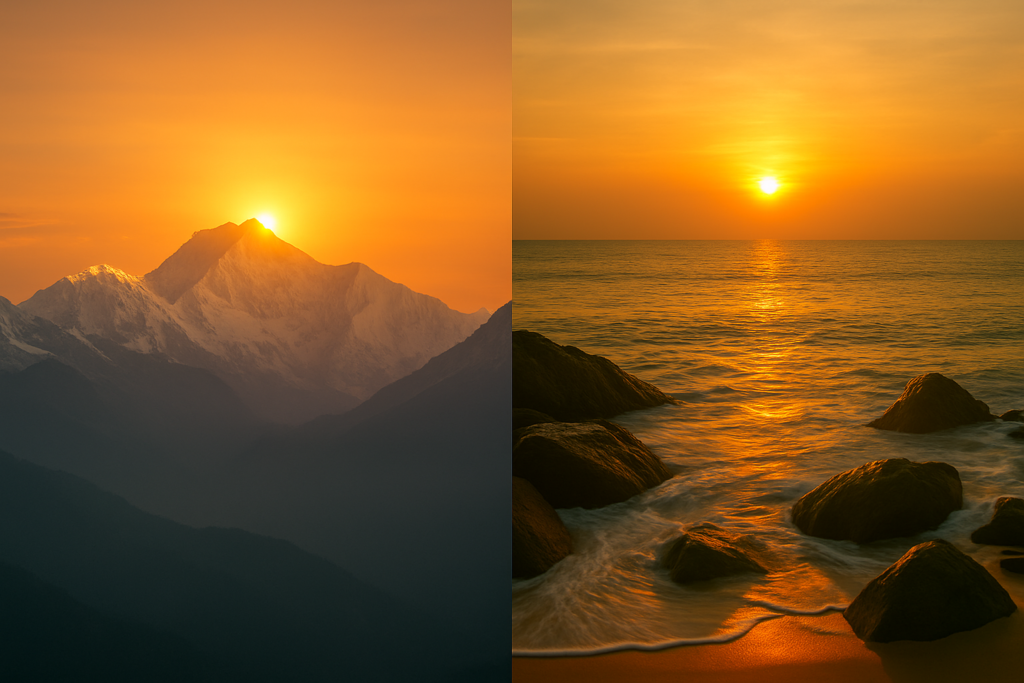
The North has some breathtaking sunrise spots like Tiger Hill in Darjeeling, followed by others. In the South, sunrise is a mesmerizing event, especially when the Bay of Bengal, Arabian Sea, and Indian Ocean meet. Seeing this stunning view over the water while standing on India’s southernmost tip is super cool.
Historic Spots to Visit in North and South India
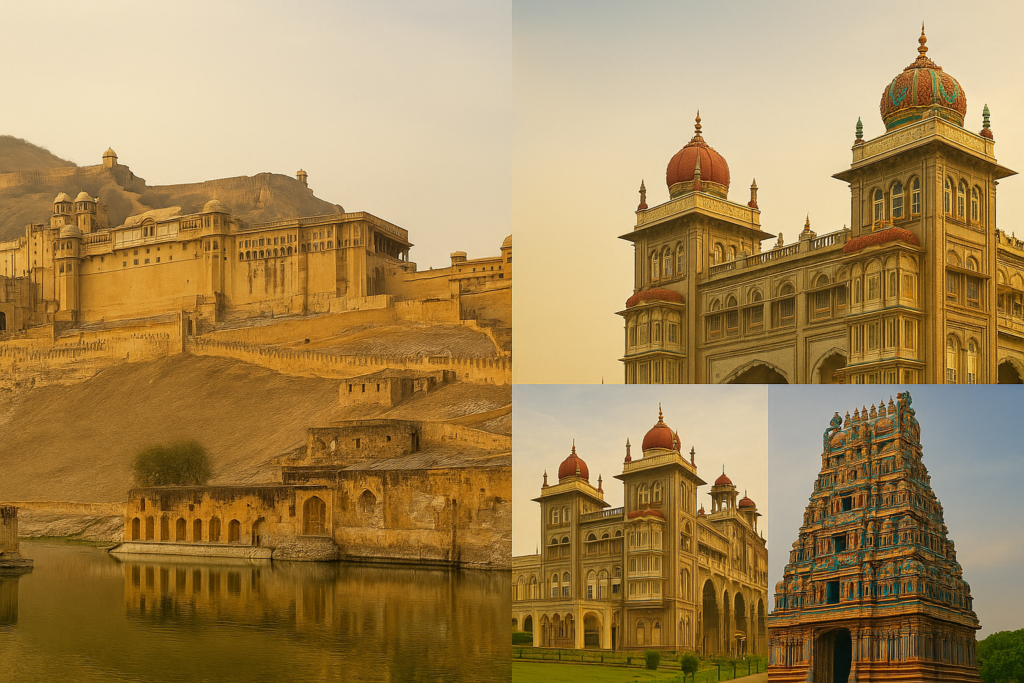
India is a nation full of historical sights because of its long past. The aroma of heritage goes smoothly from North towards South and other parts of the country. The northern region has tons of forts and castles which produce the aroma of royal empires and valiant battles. Agra Fort, a UNESCO World Heritage Site in Uttar Pradesh, is a must-visit Mughal-era architectural marvel.
Another symbol of Mughal legacy is the Red Fort in Delhi, shining as a symbol of Indian independence. Similarly, Rajasthan narrates insights into Rajput history through Mehrangarh Fort, Amer Fort, Nahargarh Fort, Jaisalmer Fort, and Kuldhara village.South, on the other hand, invites tourists for its opulent palaces such as the Mysore Palace in Karnataka, and Nawabs’ palaces in Hyderabad glow beautifully at night, displaying their royal heritage and Indo-Saracenic architecture.
The wooden palace known as Padmanabhapuram in Tamil Nadu makes you feel like you’re in another realm of reality. Since Pondicherry retains its colonial history and European charm, a must-visit here is the French Quarter, mainly for its cobblestone streets and pastel-coloured buildings.
Adventure Spots in North and South India
When it comes to adventure, the northern part is something you can’t avoid because of the rapids of Rishikesh and the peaks of Manali.Camping under the stars in Spiti Valley is even more electrifying and sensational than hiking, especially with the rugged terrain and extreme altitudes.In the South, the dare comes through the crystal-clear waters of the Andaman Islands or a trek up to the Meenmutty Falls in Kerala, with an option to choose Hampi’s volcanic rock formations.
Highways and Highlands of North and South India
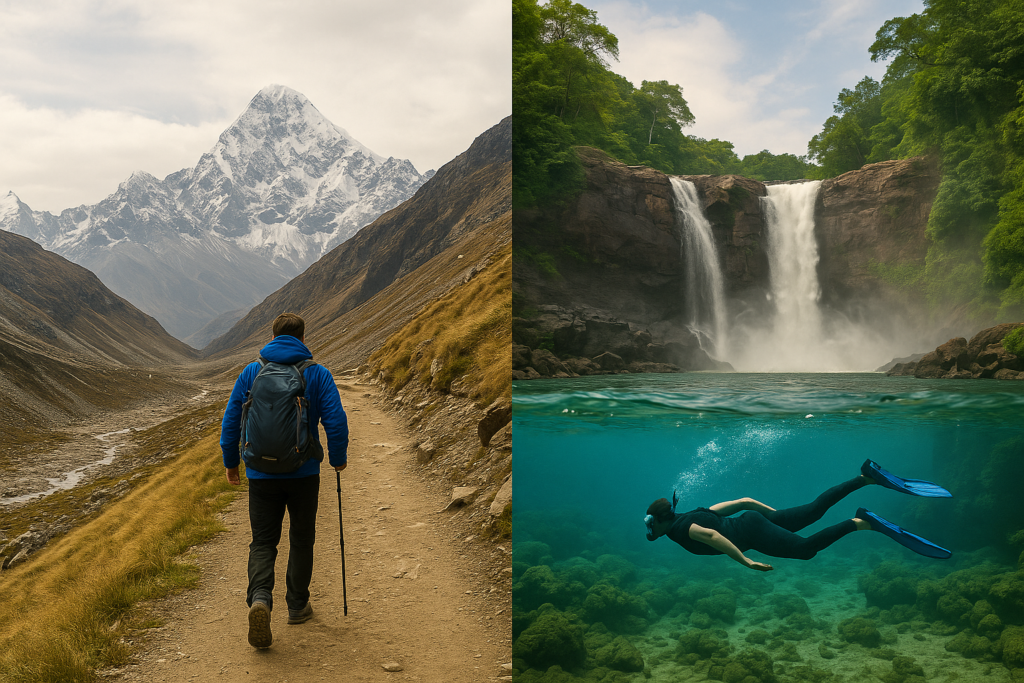
If you consider choosing a road trip through North India and South India, it gives two distinct yet equally captivating experiences.The North has rugged hills and challenging terrains, whereas the South is all about scenic escape with relaxed routes. The route starts from the Yamuna Expressway and the Eastern Peripheral Expressway, which is quite comforting. But, as soon as you enter the steep curves of Himachal Pradesh or the Rohtang Pass, you are almost at the edge of a risky adventure.
Driving through the roads of Uttarakhand, Ladakh, and Spiti Valley is highly demanding during the monsoon and winter seasons, but the challenges are reward-worthy. Seeing those stunning peaks and remote sights from close and taking a walk across hidden lakes is an experience of a totally different reality. Staying at one of the homestays in the remote villages of Himachal takes you closer to the locals and their lives.
Wildlife of North and South India
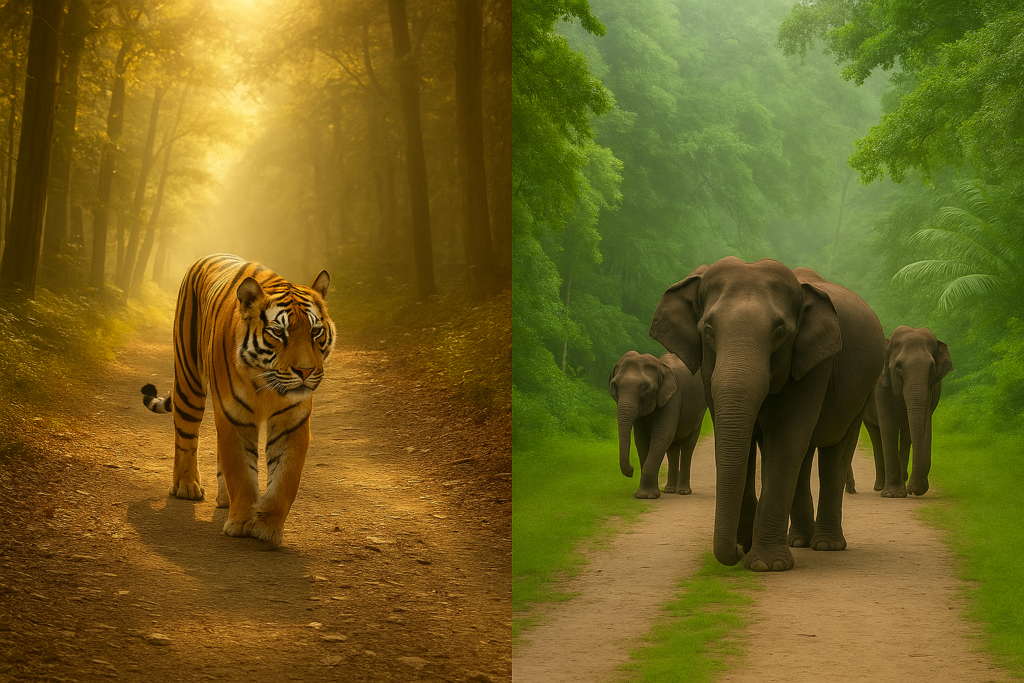
Entire India has enough wildlife, including North India and South India. The North is famous for housing tigers, mainly in Jim Corbett National Park in Uttarakhand and Ranthambore National Park in Rajasthan. These natural landmarks are famous for tiger sightings against the backdrop of rivers or ancient ruins. Kanha National Park and Bandhavgarh National Park, towards the centre of the country, were designed to attract northern travellers for wildlife adventures. Wildlife and nature are at their finest in South India’s biodiverse forests. Bandipur and Nagarhole National Parks feature leopards, tigers, and Indian bison, while Periyar Wildlife Sanctuary in Kerala is known for its Asian elephants.
conclusion
It’s hard to say which part of India is best for solo travelers, doesn’t matter if they’re coming with a group or alone. The North and South India tour of Travel Losei makes sure everything you experience during the visit is pre-planned and absolutely pleasurable for you from the very beginning. North India represents its beauty of forts, castles, glory, and cultural diversity, which you won’t see in the South, as South India leans more toward a well-established infrastructure of their own history, a stable climate, scenic coastal drives, lush landscapes, and serene backwaters perfect for relaxation. It has a more predictable travel experience with fewer associated risks. North, although not so risky, presents a more adventurous and dynamic experience, representing its own style.
If you are a first-time visitor, both parts have an ideal mix of beautiful adventures. In terms of safety, the South part is safer and more comfortable in terms of journey and stay. Whereas, the North part can be unpredictable and sometimes dangerous, not because of natural calamities and landslides but because of unpredictable weather conditions.
FAQ
Q. Which part is more expensive, Northern or Southern to visit?
As per the reviews, the northern part has been seen as more expensive in comparison to the southern.
Q. What kind of transportation can I use as a first-time traveler?
As India is developing, you can access trains to go from one city to another, metros to go from one part to another, and buses and autos to feel the Indian vibe of comfort and adventure at the same time.
Q. Which part of India is famous for spiritual growth?
The north part is seen as the spiritual growth hub of India, but there’s no comparison as such to say which one is more famous, both are best to experience spiritual growth.
Q. Can I experience biodiversity in the southern part?
Certainly yes, you can experience it.




